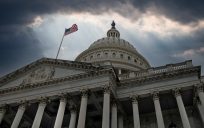Shortly after he was inaugurated, President Trump called the current federal retirement benefit plan “unsustainable.” Similarly, Republicans in Congress highlighted federal retirement benefits as a target for their 2017-2018 agenda. At that time, Rep. Jason Chaffetz, R-Utah, chair of the House Oversight and Government Reform committee suggested that changes to federal employee benefits would come through moving new employees to only a defined-contribution plan, like the TSP, instead of a defined-benefit plan like FERS.
On May 22, when the White House released the president’s proposed 2018 budget, changes to the federal retirement system made up a significant portion of the cost reductions, totaling about $4.1 billion in 2018 alone. A few highlights:
- Elimination of the cost of living adjustment (COLA) for current and future FERS employees
- A decrease in the COLA for CSRS employees by 0.5%
- A required increase in employee contributions to FERS by 1% in 2018, and an additional 1% per year for another five to six years, or until the employee and government match are the same (required contributions for current CSRS employees would remain the same)
- Future retirement benefits would be based on the average of the highest five years of an employee’s salary, instead of remaining based on the highest three-year average currently in use
- An elimination of the retirement supplement provided to those in FERS who retire before age 62 until they can draw Social Security benefits
So, what does that mean? Feds who have already retired may see a decrease in their future benefits due to the proposed end of COLA. How much less would depend on the rate of inflation. Current federal employees may see lower take-home pay, given the proposal for increased employee contributions to FERS.
Some feds may be more inclined to put more money into TSP to ensure a bigger nest egg at the time of retirement or to delay retirement. If more feds delay retirement, that puts hiring on hold, impacting potential employees trying to get into government along with current feds who are trying to move up the ranks. A decrease in the benefits that can sometimes be an appealing recruiting tactic may also hamper efforts to recruit the best and brightest to the government workforce.
Now, it’s worth noting that this isn’t the first time proposals have been made to shift or cut federal retirement benefits, and Congress will have the ultimate say on what goes into the 2018 budget. However, given that Republicans control both houses of Congress along with the White House, and have expressed a shared goal of reducing the cost of federal benefits, the timing could be right for at least some changes.
What can you do to help insulate yourself in times of uncertainty? While individual circumstances vary, here are a few tips:
- If you are a FERS employee, contribute at least, if not more than, the 5% of your base salary to your TSP so you ensure you are getting the full employer match.
- If you’re over age 50, check out your TSP to determine if you’re eligible to make catch-up contributions. (Need more tips on managing your TSP account?)
- Assess your current financial plan to determine whether you are on track with your goals and what adjustments you might need to make to hit your retirement goal if cuts to retirement benefits come to fruition. This includes considering how and when you might draw from your retirement savings once you have retired. If you haven’t started a financial plan, sit down and write one today. (Here is some information to help you.)
- Keep saving and investing. This isn’t the time to start hiding your money under a mattress. In fact, as I mentioned, this is the perfect time to up your contribution to get that full employer match. And, it’s a great time to re-evaluate your investment portfolio to determine whether you should increase or decrease your risk based on your planned retirement date. (Read up to understand risk.)





the managing your TSP account link is broken, thank you
The federal employee budget is a small portion of the overall budget yet it is visible and easily attacked. The budget can not be balanced on the backs of the civilian work force nor should the benefits of existing federal workers be changed from the condition in existance at the time of Entry on Duty. I wish that real action was entertained by our leadership instead of symbolic gestures at the expense of the federal work force.
You got people living on the dole for years and more joining but you want to balance the federal budget on the backs of the Federal workers, current an in the past, not good!
Great and important advice Heather Kerrigan. I would add diversify. I get a sense this year it is an attack on our Gov, on multiple fronts, from within, the very top. so my advice is think outside the box, via outside the Gov. Many have been building up a savings over their life time they do not realize, knowledge. So you may want to invest a little in an entrepreneurial venture you can capitalize on in retirement (or semi-retirement) . Like using your lifetime of accumulated knowledge to write a book, start a consulting business, educate others, etc. something that does not require too much investment on your part, but important like all retirement plans, that you plan now. Being diversified will bring you an addition piece of mind, in these uncertain times.
Why not eliminate lifetime salaries of Congress and the presidency? That would go far to balance the budget.
Like anything else the politicians do, it does not affect their pensions or benefits. They are on a pedestal.Just like obamacare. If it’s so good why aren’t they required to be on it. No we are exempt.